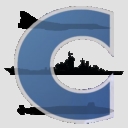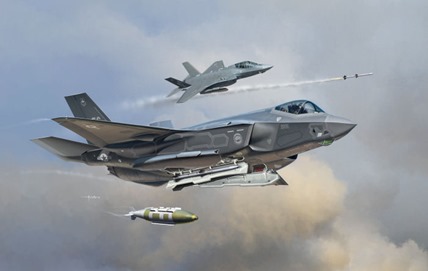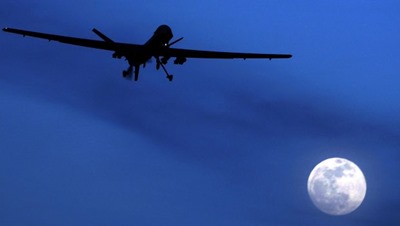Dimitris
Posts: 13282
Joined: 7/31/2005
Status: offline

|

Miguel Molina has released the updated version of the Command community scenario pack. The new release includes a whopping fifteen brand-new scenarios:
Frigate Duel in the Scotia Sea, 2023: Tensions have increased between Argentina and the United Kingdom, partly because of the recent discovery of large deposits of valuable minerals in the undersea basins south of the Falkland Islands. Argentina has replaced its aging destroyer fleet with a quartet of fast frigates based on the LCS-Independence design. One of these ships is steaming off Cape Horn to contest the area against a RN upgraded Type 23 frigate.
The Lost Province, 2017: Nearly 70 years after the Nationalists fled to Taiwan, the PRC leadership has decided that the time has come to retake the island. You are ordered to initiate the invasion with a large air and surface force, supported by a hail of ballistic missiles.
Operation Mole Cricket 19, 1982: During the 1982 Israeli offensive into Lebanon, it became apparent that the strong presence of Syrian SAMs would threaten Israeli air superiority over Lebanon. As Syrian Forces moved even more SAMs into the region, Israeli leadership ordered strikes against the SAM sites. What followed would be subsequently known as the "Bekaa Valley turkey shoot".
Skagerrak, 1963: A NATO task force must escort two ammunition ships through the Skagerrak Straits to the inlet of Oslo.
Contigency, 2016: France has a long and accomplished history of successfully projecting military power in support of its national security goals from the American Revolution to the current war on terror. It does that by acquiring basing rights and staging small detachments of ground, air and naval forces worldwide that in the event of a crisis are in a better position to impact an outcome while more power is pushed into the theater. This scenario demonstrates the extend and limits of this ability in a series of evolving crises.
The Honduran-Cuba War, March 12, 1968: In 1955 large quantities of iridium were discovered in Honduras. The country, which suddenly found itself in possession of most of the world's accessible supply of this rare metal, quickly took advantage of its new wealth to become a regional power, purchasing military aircraft, a flotilla of small warships, and even a submarine from the United States. Unfortunately, the newfound prosperity could not solve every problem, and Honduran relations with Cuba have deteriorated since the Communist Revolution in that country. By 1968, tensions with Cuba have reached a breaking point. When a Cuban patrol boat fired on a Honduran fishing boat that had strayed too close to (but, according to Honduras, not within) Cuban waters, a Honduran destroyer first requested it break off its attack. When it was clear the Cubans had no intention of ceasing their attack and that civilian lives were in peril, the Hondurans sank the Cuban warship. Cuba has declared this casus belli and is preparing for war.
The Honduran-Cuba War, March 19, 1968: So far, Honduras is "winning"; while they have lost several aircraft, one of their elderly destroyers, and one of their minesweepers (which double as offshore patrol vessels), Cuba has lost three small frigates and more than a dozen combat aircraft. Cuba has sworn to make Honduras pay for its "crimes against world socialism". Honduras is concerned about merchant shipping; it relies, among other things, on being able to get the iridium it mines to wealthy buyers like the United States. It also needs to purchase and then transport munitions to replace those expended so far in the war. Of particular concern are the Komar-class missile boats operated by Cuba. Honduras operates a number of older vessels purchased from America which offer significant firepower in the form of naval gunnery but have limited anti-missile defenses.
The Honduran-Cuba War, March 26, 1968: The war continues. Honduras has managed to negotiate an emergency purchase of F-4 Phantoms to replace those lost in combat; in addition, it has assigned some of its elderly but still capable F4U Corsairs to fly CAP missions over the northern coast. The real problem is ammunition--the supply of missiles for the Phantoms is running short. A convoy with badly needed supplies is en route from America. It is essential that at least some of these ships make it to Honduras.
Warthogs Over Latakia, 2013: The 2013 Syrian chemical crisis has escalated into total war. NATO's initial strikes on Syria's chemical weapons facilities have proven insufficient, and the downing of several NATO aircraft during the attacks has made the government overconfident. The decision has been made to strike directly at the regime's army, as losing its conventional strength would mean being overrun by rebels. Two squadrons of A-10 Thunderbolts have been assigned to the task.
The Bridges at Toko-Ri, 1952: The movie "The Bridges at Toko-Ri" was based on author James Michener's writings as an embedded reporter on USS Essex (CV 9) and USS Valley Forge (CV 45) in the winter of 1952. This scenario is loosely based on the movie. Take command of Task Force 77.9, centered on the USS Essex, and execute defense suppression strikes in support of a USAF attack on the two railroad bridges.
Crimea River, 2016: The winter of 2015 was a brutal one for Russian-annexed Crimea. Due to the collapse in oil prices and continued economic sanctions by the West, the Russian Federation economy was in shambles. In January 2016 dissatisfaction turned to uprising, and the first Crimean rebellion was brutally supressed by Spetsnaz elements. After leaked footage of mass graves was published, NATO was politically forced to take sides. A large strike on Russian military assets in Crimea was planned and NATO assets were assembled. Russia was alerted in time, however, and placed significant forces in anticipation of this attack. Despite Russia's readiness, the political climate still necessitated direct action. NATO's strike, codename OPERATION CLEAN SWEEP, was authorized to proceed.
Convoy '88, 1988: This scenario takes place in May 1988, five days into a hypothetical NATO-Warsaw Pact conflict in Europe. Had the Cold War escalated into a shooting war, control of the North Atlantic would have been essential for both sides. For NATO the objective would've been to keep the sealanes open and protect the convoys bound for Europe from Soviet submarines and bombers. The Soviets' primary goal was to close the Atlantic and deny NATO resupply from the sea. Convoy '88 puts the player in the role of Convoy 88-7's commander for 24 hours. This is primarily an ASW scenario, however a respectable air threat is also included.
The 4th of July, 1989: It is the summer of 1989, and the revolutionary wave of dissent that has been sweeping through the Soviet Union and other Warsaw Pact Countries has been brutally put down. Soviet military forces on the Central Front have been reinforced, and NATO intelligence is seeing some disturbing movement of Soviet front-line tanks and troops in East Germany. Recent NATO troop withdrawals in Europe have once more made tactical nuclear weapons necessary to stop a possible Soviet breakthrough. The Soviets would also be expected to employ tactical nukes. It is now July 4th, 1989, and the Soviet Union has decided to lay claim to all of Germany.
Korean Campaign, 2018: It is the spring of 2018, and it appears that Kim Jong-un is finally going to make good on his constant threats to launch an attack into South Korea. After upgrading some of his military equipment from China and Russia, Kim has massed over 600 tanks, long range artillery batteries, and infantry units along the border. The U.S. and South Koreans are prepared to launch OPERATION BROAD SWORD, a pre-emptive combined-arms attack on the North Korean Ground Forces. A reinforced convoy is en-route to the port of Busan with critical fighting forces and supplies. The Chinese also have substantial forces in the area, but are not considered hostile as of yet. Can the U.S. and S.Koreans stop the massed North Korean armor before it reaches Seoul, and get the convoy safely to Busan?
White Piano, 1966: Italy and Yugoslavia are mobilizing against each other. Italian intelligence suggests that Yugoslav forces are about to attack Trieste, the important and long-contested port city. A surface group centered on the aviation cruiser Andrea Doria is dispatched to protect the city.
As always, the community scenario pack is available for download from the Command downloads page: http://www.warfaresims.com/?page_id=1876 . The scenarios are also available individually for download on the Command workshop on Steam.
_____________________________
|
 Printable Version
Printable Version
















 New Messages
New Messages No New Messages
No New Messages Hot Topic w/ New Messages
Hot Topic w/ New Messages Hot Topic w/o New Messages
Hot Topic w/o New Messages Locked w/ New Messages
Locked w/ New Messages Locked w/o New Messages
Locked w/o New Messages Post New Thread
Post New Thread